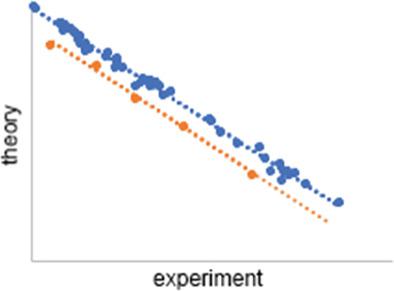当前位置:
X-MOL 学术
›
Magn. Reson. Chem.
›
论文详情
Our official English website, www.x-mol.net, welcomes your
feedback! (Note: you will need to create a separate account there.)
Solvent Optimization and Conformational Flexibility Effects on 1 H and 13 C NMR Scaling Factors
Magnetic Resonance in Chemistry ( IF 1.9 ) Pub Date : 2020-01-14 , DOI: 10.1002/mrc.4986 Amy T Merrill 1 , Dean J Tantillo 1
Magnetic Resonance in Chemistry ( IF 1.9 ) Pub Date : 2020-01-14 , DOI: 10.1002/mrc.4986 Amy T Merrill 1 , Dean J Tantillo 1
Affiliation

|
The effects of including (a) implicit solvent in geometry optimizations, (b) conformationally flexible molecules in test sets, and (c) empirical dispersion D3(BJ) on scaling factors for predicting 1H and 13C NMR chemical shifts were explored. Scaling factors with optimizations performed in the gas phase and with a Polarizable Continuum Model (PCM) solvent model were obtained for 12 organic solvents, including 2,2,2‐trifluroethanol and chlorobenzene, for which scaling factors have been developed for the first time. Scaling factors for aromatic solvents were split into primary and secondary scaling factors to account for CH–π effects. Including empirical dispersion D3(BJ) did not lead to significant improvement.
中文翻译:

溶剂优化和构象灵活性对 1 H 和 13 C NMR 缩放因子的影响
探讨了在几何优化中包括 (a) 隐式溶剂、(b) 测试集中的构象柔性分子和 (c) 经验色散 D3(BJ) 对预测 1H 和 13C NMR 化学位移的比例因子的影响。获得了在气相中进行优化的比例因子和可极化连续模型 (PCM) 溶剂模型,用于 12 种有机溶剂,包括 2,2,2-三氟乙醇和氯苯,这是首次开发的比例因子。芳香族溶剂的比例因子被分为主要和次要比例因子以解释 CH-π 效应。包括经验色散 D3(BJ) 并没有带来显着的改善。
更新日期:2020-01-14
中文翻译:

溶剂优化和构象灵活性对 1 H 和 13 C NMR 缩放因子的影响
探讨了在几何优化中包括 (a) 隐式溶剂、(b) 测试集中的构象柔性分子和 (c) 经验色散 D3(BJ) 对预测 1H 和 13C NMR 化学位移的比例因子的影响。获得了在气相中进行优化的比例因子和可极化连续模型 (PCM) 溶剂模型,用于 12 种有机溶剂,包括 2,2,2-三氟乙醇和氯苯,这是首次开发的比例因子。芳香族溶剂的比例因子被分为主要和次要比例因子以解释 CH-π 效应。包括经验色散 D3(BJ) 并没有带来显着的改善。











































 京公网安备 11010802027423号
京公网安备 11010802027423号